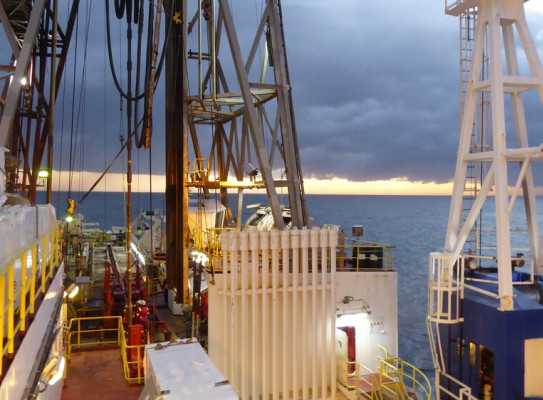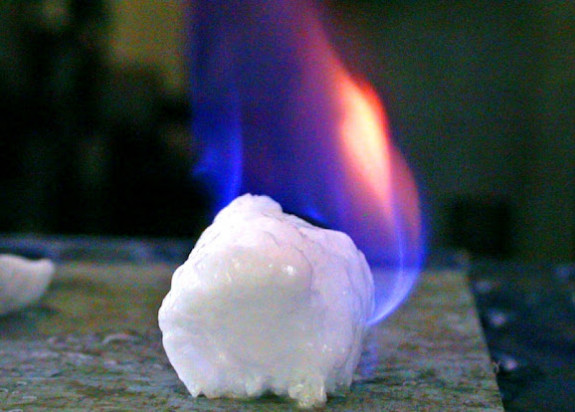Scientists prepare ground for possible exploration of gas hydrates

A group of scientists from two Crown Research Institutes and two universities are part-way through a six-year research programme to better understand New Zealand's offshore deposits of gas hydrates.
Hydrates, which are seen as a potential future energy source, are a naturally occurring ice-like form of water containing large quantities of trapped natural gas.
The accumulations occur under the seabed and extend in a solid band from offshore Marlborough to Poverty Bay. Researchers see this large deposit as world class in its quantity and quality. But it is not yet clear if it is feasible to commercially extract the natural gas.
The research is being led by GNS Science in collaboration with NIWA and the universities of Auckland and Otago.
The MBIE-funded contestable programme receives $536,000-a-year in funding. It involves collecting and analysing geological and geophysical data to improve the understanding of the distribution of hydrates, and particularly where ‘sweet spots’ occur. These are concentrated accumulations.
Findings will be used by industry and government to assess the feasibility of harvesting this resource.

Programme leader Ingo Pecher, of The University of Auckland, said internationally attitudes had become more positive to the feasibility of extracting natural gas from hydrates.
"While the abundance of gas hydrates has been known for many decades, up until a few years ago scientists thought it was almost impossible to extract any gas from it," Dr Pecher said.
Engineers had developed a way of 'melting' the hydrates so natural gas was released and captured. This had been demonstrated recently in a test well off the Japanese coast.
The scientists in the New Zealand programme had been making steady progress in identifying hydrate accumulations with seismic data and modelling. This, together with improvements in understanding how they form, meant scientists are now more confident of finding 'sweet spots'.
This would be a key factor in enabling the industry to evaluate the potential of developing this resource, Dr Pecher said.
A component of the research was also devoted to developing baseline biological and ecological data around known seafloor seep sites, that are associated with gas hydrate accumulations.
Another scientist in the programme, Stuart Henrys of GNS Science, said the research was building to a point where there would be enough information to allow scientists to undertake scientific drilling off the East Coast to learn more about the marine sediments and biological communities where hydrates occur.

Ground-truthing by scientific drilling will be the ultimate test of the quality of the gas hydrate deposits.
Dr Henrys is Chair of New Zealand's academic group participating in the Integrated Ocean Discovery Program (IODP). This 26-nation initiative is the world's largest earth science project.
It uses purpose-built research ships to drill into the seabed to obtain a wide range of information about the way the Earth works.
Background:
Gas hydrates, or methane hydrates, are a gas-rich ice crystal that has been described as looking like sorbet. New Zealand has some of the most extensive deposits of this frozen form of methane in the world.
The largest gas hydrate province is on the Hikurangi Margin, east of the North Island.
It covers roughly 50,000 square kilometres. Scientists estimate that if only a fraction of this resource could be recovered economically, it would be the main source of natural gas for New Zealand for many decades. A feature of New Zealand's accumulations is the relatively high number of 'sweet spots', where hydrates tend to concentrate.
New Zealand is one of about 15 countries investigating the possibility of extracting gas hydrates from their territorial waters. Japan is seen as the leader in hydrate research.
Its hydrate accumulations could potentially meet its energy needs for the next century.
Recent advances in Japan could potentially bring forward commercial production of hydrates in several countries. At present the cost of extracting hydrates is unattractive compared to conventional gas production. However, the cost of hydrate production will inevitably come down, making it more attractive.